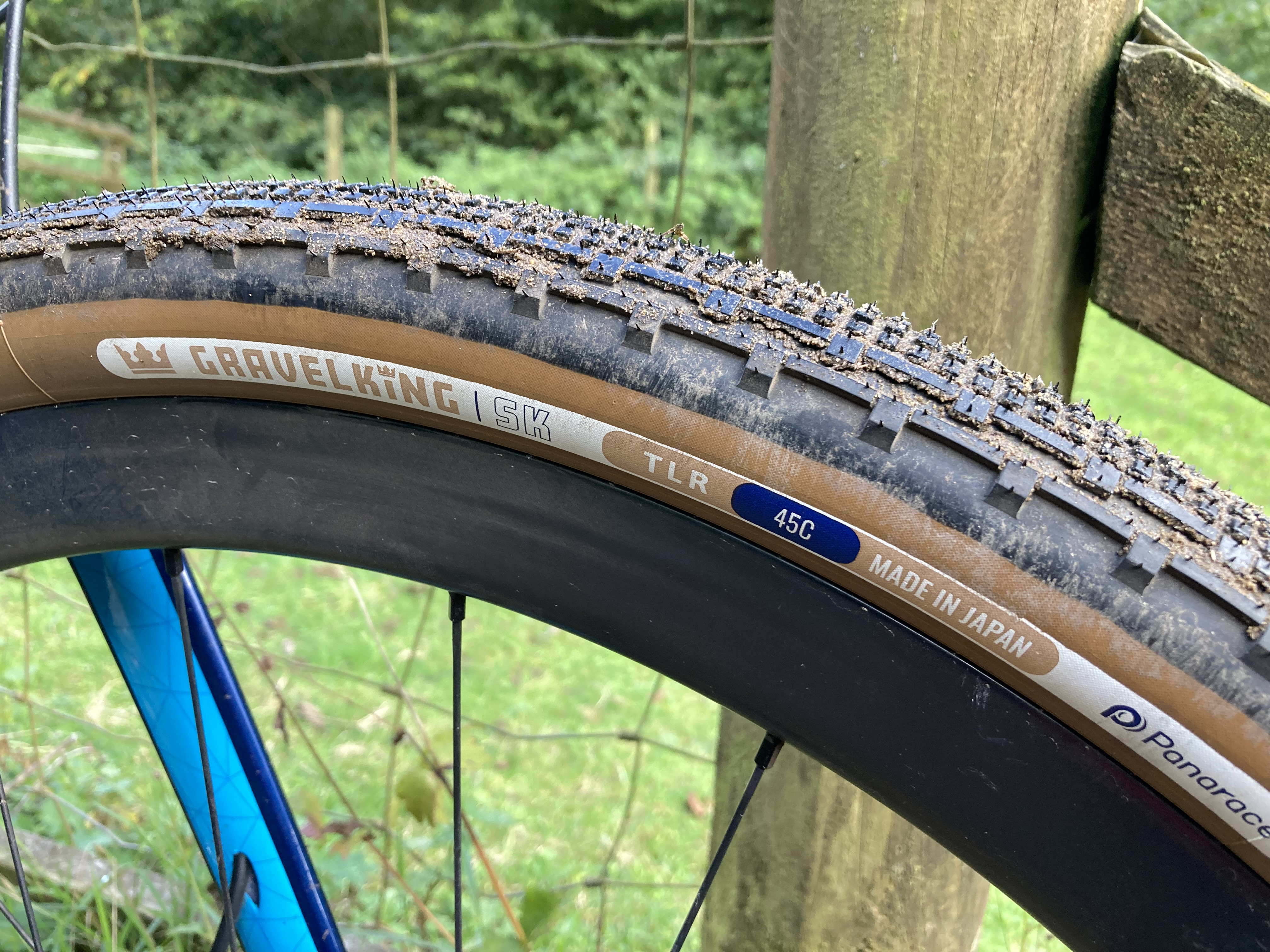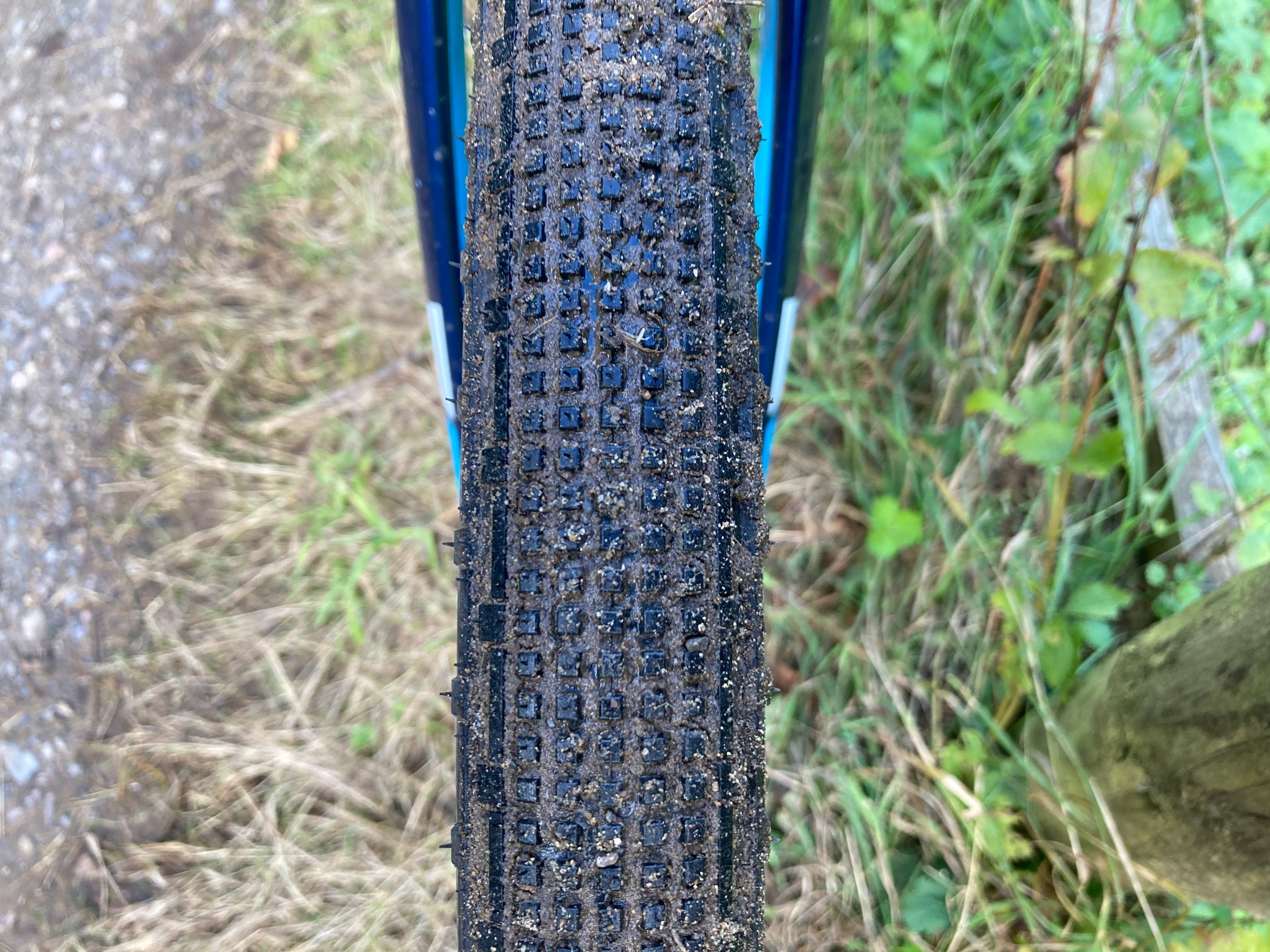
As tyre brands go, Panaracer finds itself in a highly enviable position among the gravel set – it manufactures what is widely considered to be the benchmark tyre. A bit like the good old Continental GP series for road bikes, they're not necessarily everyone's favourites, but they're rated by many and few riders haven't tried one.
Tyre comparisons on forums and group rides will usually circle back to 'how does it compare to a GravelKing?'.
This especially applies to the do-it-all GravelKing SK – small knob, if you were wondering – which is the tyre we have here, and has been around for eight years now. The benchmark of benchmarks, if you like.
The GravelKing range has been relaunched for 2024 and now contains more versions than you can shake a stick at. Seventeen, to be exact.
They vary from the treadless, roadgoing version – the GravelKing Slick – through the Semi-Slick and the SK, to the more extreme X1. There are lightweight versions of each (R-Line), as well as extra-tough versions too (Plus), spanning what has become a veritable GravelKing multiverse.
As with its many stablemates, the GravelKing SK comes in a wide variety of sizes, from 30-50mm in 5mm increments, and three 650B sizes are available as well as one each for 29in and 26in.

Construction
As far as gravel tyres go, it is this SK version that stands in the Goldilocks zone, with enough useful tread for off-road riding, but not so much that riding on the road becomes a chore with a loud, buzzy soundtrack.
The profile is a very rounded one, with little in the way of shoulder knobs. It's folding, and tubeless-ready, as denoted by the 'TLR' in the name.
The tread uses what Panaracer calls Zero Slip Grip (ZSG), which it says is engineered specifically for gravel surfaces to maintain traction across a variation of temperatures and to perform well on tarmac too.
Most of the tread comprises a wide, central channel of the uniform small knobs referenced in the tyre's name. On either side of that runs a pair of dot-dash tread lines, followed by another pair, right on the outside curve of the tyre.
There is puncture protection in the form of Panaracer's TuffTex casing, which reaches from bead to bead, while the beads benefit from the company's Beadlock technology, which is designed to best seat the tyre on a wide variety of rim types, hookless included.
The tyre comes in two standard colour options – all black, and the now-ubiquitous black/brown that we have on test. If you fancy standing out from the crowd, Panaracer's popular multi-coloured releases have become a regular (but limited edition) fixture. The latest option is 'matcha' – which pretty much amounts to a muted fluoro green – with the same brown sidewall we have here.

In use
The first step is of course to get the tyres mounted up, which can occasionally prove a bit of an adventure on its own and not necessarily an enjoyable one.
Both GravelKings, though, went on without a hitch. They even went on without a booster pump – a simple floor pump did the job. That may or may not be the Beadlock in action but either way, it didn't seem to hurt.
The tyres look quite big on the rim, with that lack of a 'shoulder' emphasising their bulbous, rounded cross-section, but inflated to a spot-on 45.1mm at 30psi on our 22.4mm internal depth rims.
On the first few occasions, I took the tyres out inflated to 35psi, which I usually find to be the on-road/off-road sweet spot for my generous, 90+kg weight. This seemed to work very nicely on the tarmac, with the tyres offering an urgent and zippy ride that belied their size. But once off-road, on anything rougher than hardpack, they were uncomfortably hard and somewhat skittish.
With a bit of experimentation, I found 30psi to be the ideal compromise, preserving much of their zip on the road but offering a decent amount of confidence and comfort once off it.
Unless you and I are the same weight, you'll probably need to adjust these pressures again – but just be prepared to go down a few psi compared to what you may be used to.
For me, there was no doubt that my keenness on the lower pressures was in part due to the low-profile, fast-rolling tread and, in particular, the lack of shoulder knobblage.
They were quick to squirm during my frequent encounters with patches of mud (it's been one of those oh-so-British summers). This was in contrast to the WTB Riddler, for example, which has a similar tread but a more pronounced and aggressive shoulder that, in turn, you pay for on the road.
Verdict and value
The GravelKing SK's ease of fitting and multi-surface abilities made it a nice tyre to test and one that I hope to put plenty more miles on. There is a limit to those abilities, and that is found in the damp and in the mud when the trail gets more slippery. Unfortunately, those kinds of conditions make up a fair portion of the year in and around Surrey's leafy hills, so I will be fitting something a bit more gnarly as the conditions close in.
This could well be a set of GravelKing X1+, or perhaps the WTB Riddler, whose shoulder knobs have kept me upright in more than a few situations.
In terms of value, I have always found the GravelKings to be very keenly priced. These retail at £54.99 / $64.99 but can often be found significantly cheaper without looking too hard.







